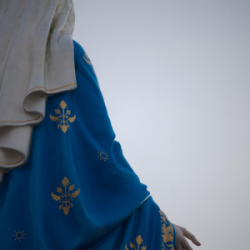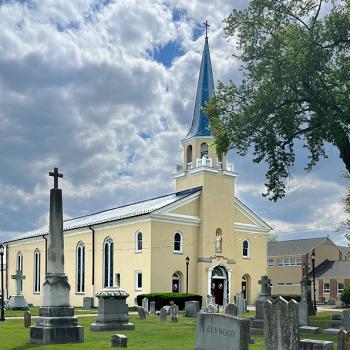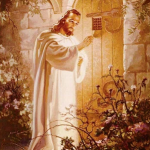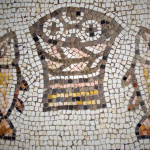Four years ago, I split an overcrowded peace lily (Spathiphyllum). They’re common plants, often sent to funerals, and I’ve had this one for a long time. It desperately needed to be broken apart, rootbound, with no space in the pot to grow while slowly gaining a hard, nearly impenetrable center.

The painful process to split the peace lily
I gently pulled it from the pot and slowly, ever so slowly, broke it apart. Despite my care, some pieces had to be discarded. However, I was able to keep five solid clumps. Four went into new pots, with the fifth and largest back into the original pot.
All the babies grew better than the Mother for the first couple of years. Could she be in shock? Angry at the loss? Or, perhaps, grieving?
One of the babies, which had grown rapidly, began to struggle. Even so, it came roaring back with a bit of tender, loving care, some fertilizer, and better light.
Last year, another baby began to falter. None of my interventions helped, and I finally said goodbye to it. But the mother plant!!! She is now thriving, and several of her babies scream, “Divide me. NOW!”
Take a look at the Mother and her babies now!

Massive parallels between Church and Garden
Years ago, I started a book, Church As Garden. I never finished it, but I should have. The obvious parallels between the church and growing plants appear throughout the Gospels as Jesus used gardening metaphors for the spiritual life.
When we operate off an industrial model of the church, rather than remembering that it is a growing, living organism, we damage the church and the nature of the gospel itself, which is rooted in biology and incarnation.
I watch what is happening to my beloved United Methodist Church from afar these days. As an ordained elder in the retired connection, I hold onto my credentials as treasured and beautiful memories of service and life.
My time there has ended, as life circumstances have taken me on another path. In many ways, I found myself still in ministry, but in a highly informal manner, perhaps like the early first-century house churches.
As part of this role, I hear some agonizing stories of pain inflicted by what many call “organized religion.” Yet, without organization, nothing can live.
Look at your body. If it were not organized in the sense of the organs knowing what they’re doing and why they’re doing it, it could not function. Every piece of the body is related to every other piece, and it takes a master engineer, i.e., a master organizer, to put it all together.
There are many trees behind our house and a few on our small piece of real estate that we say we own. I look them over each spring, anxiously checking to see if they will be OK. I marvel at the organization inside the tree that permits leaves to grow when the top is at least 50 feet high.
How do they do it? How do they get the sap up there? How can those little green springs grow at the top of the tree so that it might live another year as the leaves take in the sun and create the energy for it? It is a marvel of organization.
“Organization” is not a necessary evil. It is a good, vital part of any entity’s survival.
The problem with the “organized” church? Too much power in too few hands.
The problem is not with the organization. The problem is with power. It is always about power, and when it gets hoarded into too small a set of hands, the organization has started to die.
I look at those trees and ponder the human body. I recognize once more that everything, even the tiniest unseen part, contributes to the health of the whole. “Organized religion” went wrong when it quit valuing all of its parts, particularly the ones that we prefer not to talk about.
That brings me back to the United Methodist Church. I remember very well writing during the 2019 General Conference that the UMC had just died. In so many ways, I was right about that. A split was inevitable, and those departing inflicted much damage on the Mother Church.
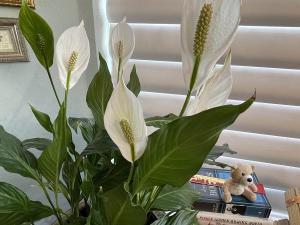
And yet . . . now may be the time she will indeed roar back and thrive. Much of the hard, impenetrable core that was slowly choking her life has left. From a few things I’ve read about the General Conference now in process, apparently, some planning to leave have stayed for this Conference, seeking to do further damage, to choke more life from the Mother Church.
But there will still, amazingly, be a United Methodist Church.
I suspect it’s going to do exquisitely well. It’ll have to get cleaned out–the pot, i.e. the current structure of the UMC, is much too big for it. She needs a series of master engineers who can build a living, thriving organism that will be flexible enough to grow strong and bear fruit while valuing all its parts.
The cleansing, i.e., the split, was necessary. At first, some of the babies, those parts that walked away and formed their organizations (and there that word again!), will look like they’re doing better than the remnant, the Mother, the UMC.
But in time, that remnant will indeed take up the space. It will indeed become vibrantly alive and ready to birth more babies. Ideally, the next time she reaches that point, she’ll have the wisdom to split herself and do it less painfully.






